My own approach to Reformation studies has been greatly shaped by the authors of these five classic studies, each of whom I have been privileged to know personally. George Huntston Williams was my major professor and great friend at Harvard University, and I serve now as his literary executor. The first book I published was in a series edited by Heiko Oberman, a scholar of enormous energy and one of the finest classroom teachers I have known. Roland Bainton was a marvelous storyteller and had a distinctive knack for making history come alive. Jaraslav Pelikan was a scholar who transcended limits. He was a master linguist and wrote with sterling clarity. Patrick Collinson I met only once at a conference on the Pilgrims at Plymouth Plantation. I have learned more about the Puritans from him than from anyone else.
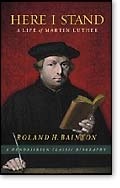 |
Here I Stand |
This book was first published in 1950, the year I was born. I first read it as an undergraduate, and it hooked me on the Reformation. Here I Stand tells the story of Luther as it has never been told before or since. Doctor Martinus almost steps off every page, a real human being beset by guilt but saved by grace. The woodcuts Bainton included in this book are a visual feast of Reformation iconography.
|
* * * |
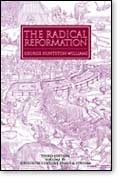 |
The Radical Reformation |
Williams argued that the Radical Reformation deserved scholarly attention in its own right, not merely as a reactionary "left wing" to other movements. This book traces the interconnections among a multitude of radical reformers, all of whom challenged the ecclesial and political structures of their time in their quest for an authentic Christianity. Williams himself coined the term "Radical Reformation" and provided a typology for understanding this amorphous movement. The Radical Reformation, he argues, consisted of three major thrusts: Evangelical Anabaptists, Spiritualists, and Evangelical Rationalists. These are not meant to be hard and fast categories but a way to understand essential themes and common patterns among the religious dissenters who stood on the margins of the official churches of the 16th century. This is a book filled with theological insight as well as massive historical detail.
|
* * * |
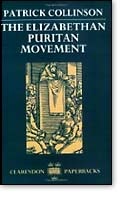 |
The Elizabethan Puritan Movement |
This book was first published in 1967 and helped to define the entire field of Puritan studies. Collinson interprets the Puritans in terms of their own self-understanding and burning desire for a "further reformation." A model of historical research based on extensive use of primary sources.
|
* * * |
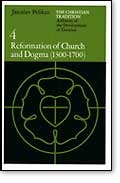 |
Reformation of Church and Dogma (1300-1700) |
This is the third volume in Pelikan's five-volume set, The Christian Tradition. The cover of each of these volumes is marked by a distinctive color: red for the early church (symbolizing martyrdom), gold for Eastern Christendom (glory), purple for the Latin West (suffering), and sky blue for modernity (the sky is the limit?). The Reformation volume in this series is green—signifying renewal, new life, new beginnings. The chronological parameters place the Reformation in the context of late medieval and early modern times. Like nearly everything Pelikan wrote, this is a work of magisterial extent and nuanced detail. Historical theology at its best.
|
* * * |
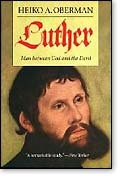 |
Luther: Man Between God and the Devil |
Originally published in German in 1982, this book is a masterpiece of Reformation history and theology. Oberman gives us a vivid account of Luther, his personal struggles, and his ecclesial import, all set in the context of the culture of late medieval society. Oberman's portrayal of an apocalyptic Luther, haunted by the devil and living on the edge of time, is a corrective to more domesticated versions of the German reformer. By looking at Luther "warts and all," we can see more clearly the abiding validity of his reforming work and theological insights for the life of faith today.
|
* * * |
By Timothy George, author of Theology of the Reformers and General Editor of the Reformation Commentary on Scripture, forthcoming from InterVarsity Press
Copyright © 2009 by the author or Christianity Today/Christian History & Biography magazine.
Click here for reprint information on Christian History & Biography.

Support Our Work
Subscribe to CT for less than $4.25/month






























